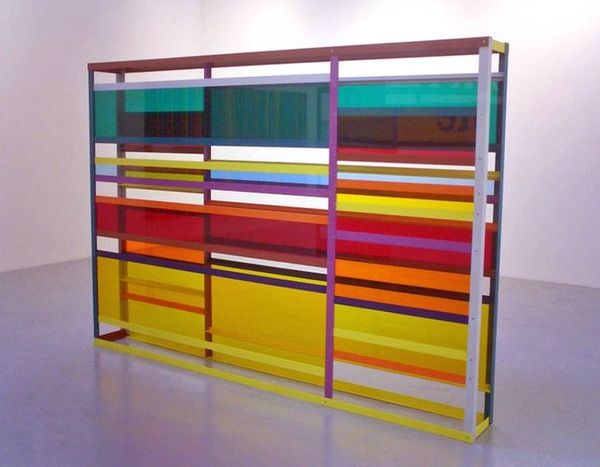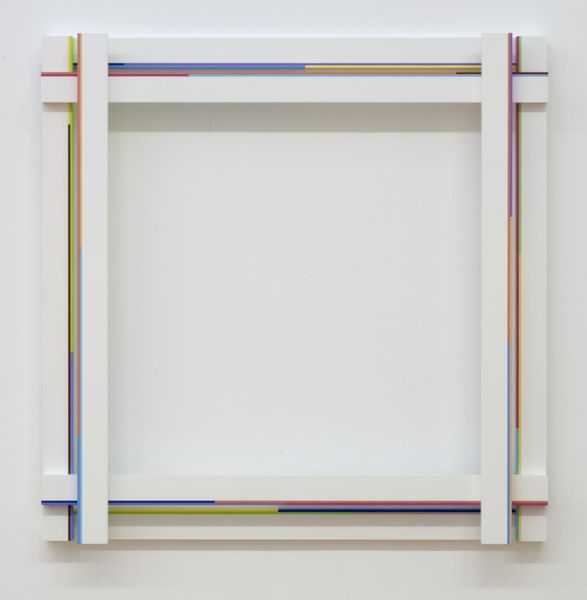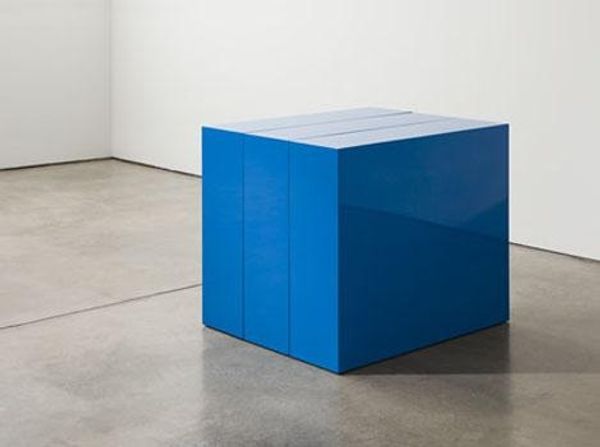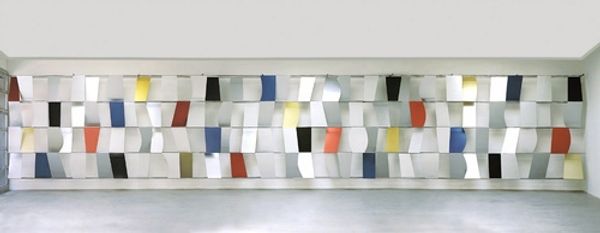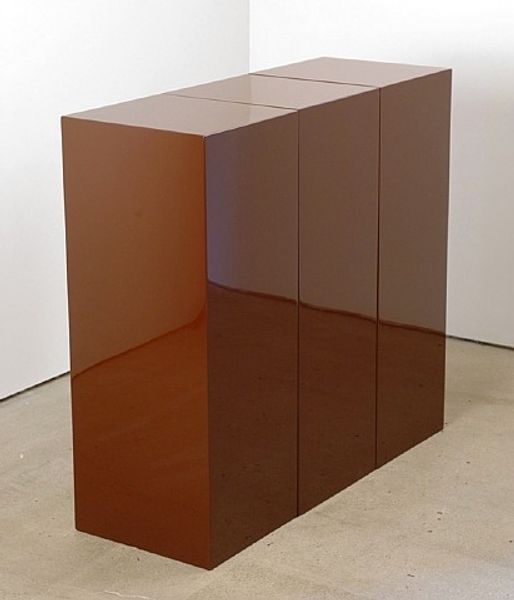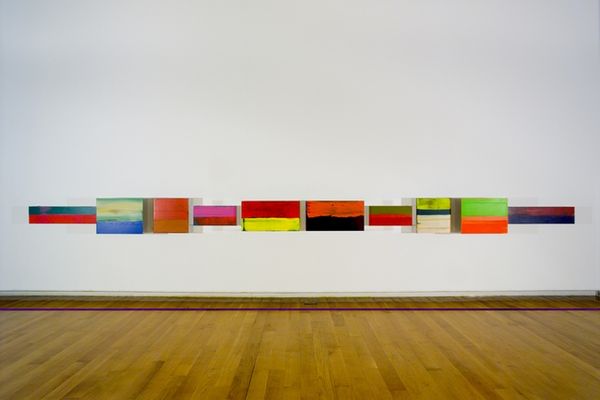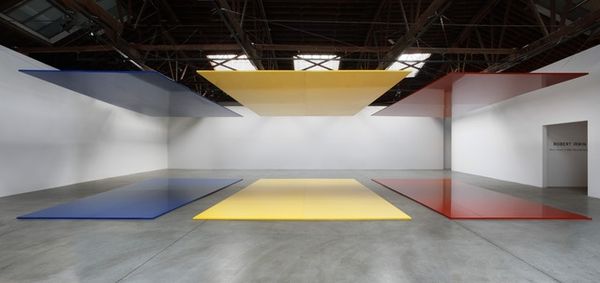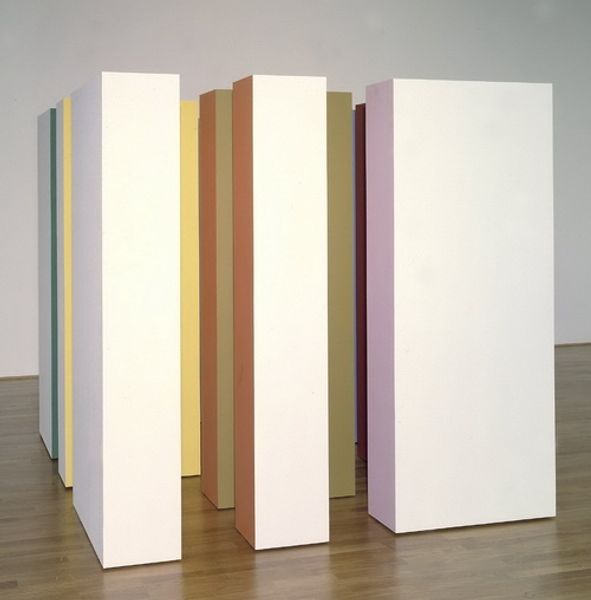
#
geometric grid
#
low poly
#
low-poly
#
geometric composition
#
furniture
#
minimal geometric
#
simple geometric shape
#
industrial style architectural design
#
modern architecture
#
geometric shape
#
geometric figure
Copyright: Liam Gillick,Fair Use
Editor: We're looking at "Rescinded Production," a 2008 piece by Liam Gillick. It appears to be a geometric structure, constructed from what seems like aluminum and colored acrylic panels. The immediate effect is a play of color and light, a sort of deconstructed minimalist cube. What strikes you most about it? Curator: The work exemplifies a formalist approach. Consider first the interplay of line and plane. Gillick employs a rigid grid structure, offset by the varying opacities and hues of the acrylic panels. This creates a visual tension between order and chaos, structure and surface. How do you perceive the relationship between the materials themselves – the coldness of the metal versus the translucence of the colored panels? Editor: I see what you mean. The metal provides the structure, the 'skeleton,' and the panels almost seem to decorate it, though that seems like too simple a term. It feels almost like an architectural model, or perhaps the skeletal framework for a building. Is that intentional, do you think? Curator: The artist has titled this "Rescinded Production." Perhaps he is playing with the notion of unrealized or abandoned plans. Now consider the planes. Their placement interrupts the purity of the geometric grid. The color relationships shift depending on one’s viewing angle. In what ways might the color interactions serve to deny a coherent, singular reading of the object? Editor: That's fascinating. It almost seems designed to be perpetually in flux. Curator: Exactly. Gillick rejects the notion of a fixed or final artistic statement. Instead, the object invites ongoing perceptual engagement. We can consider its aesthetic language in the light of seriality or as an example of a phenomenological gesture. Editor: That makes so much sense! Seeing it as something open and perpetually in process changes the way I understand its form. Curator: Precisely. By foregrounding material relationships and their arrangement in space, the artist asks us to focus on the act of seeing itself.
Comments
No comments
Be the first to comment and join the conversation on the ultimate creative platform.
